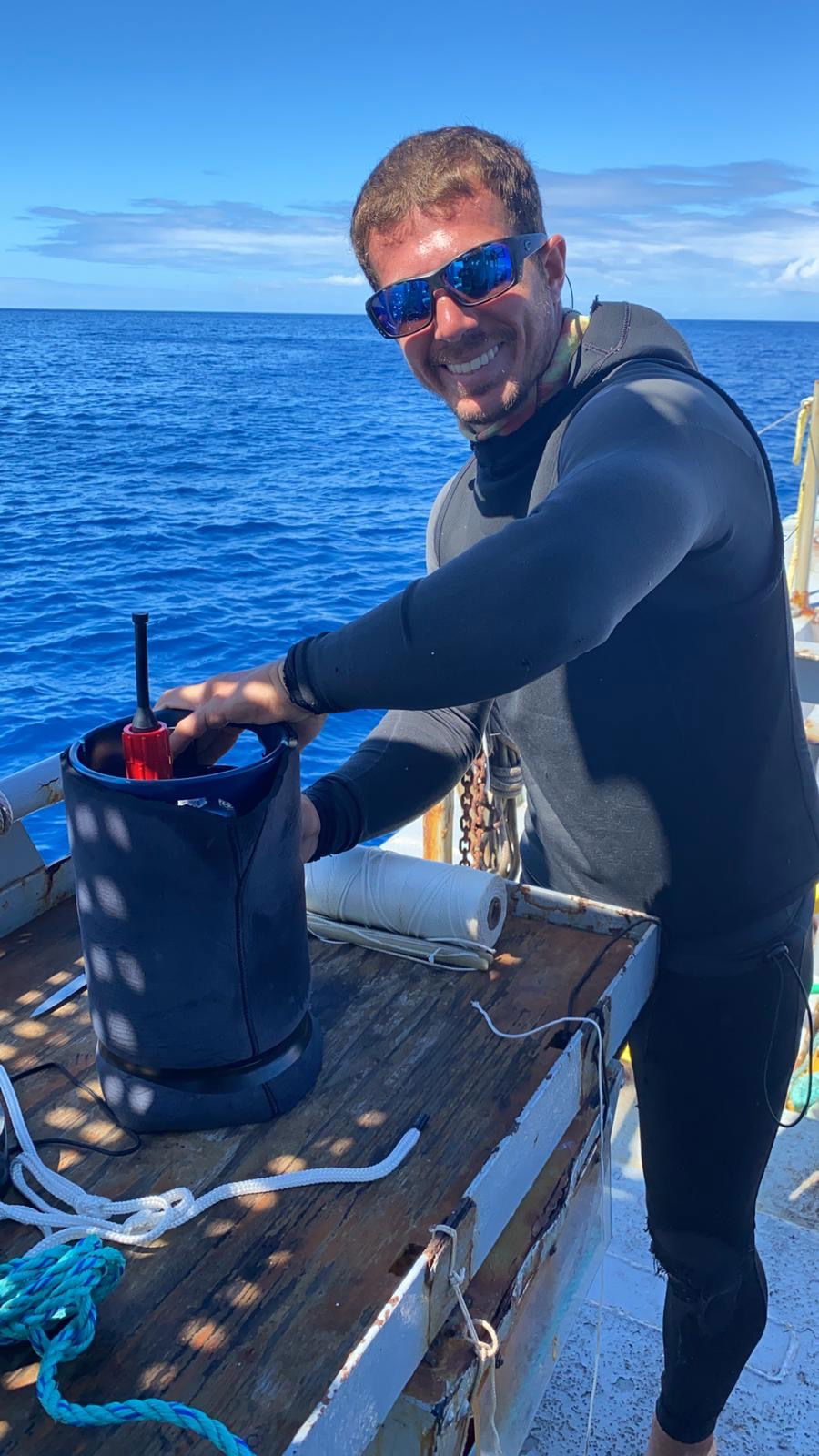Hawaiian Kanpachi at Blue Ocean Mariculture

Blue Ocean Mariculture Vice President, David Valleau began working with fish in restaurants as a teenager, cutting, cooking, and serving in seafood restaurants in Alberta Canada, California, and Washington. Over 20 years ago while working in a Seattle waterfront hotel, he was recruited to sell fish to other local chefs and to grocers. He has led several seafood companies in both wild capture and aquaculture towards a more sustainable, traceable direction.
TFF caught up with David to learn more about the difference between kanpachi and kampachi, and growing it at Blue Ocean Mariculture’s state-of-the-art facilities.
Today’s Farmed Fish [TFF]: Tell us a bit about the type of fish you raise.
Blue Ocean Mariculture [BOM]: We grow longfin yellowtail (Seriola rivoliana) from hatch to harvest on the Big Island of Hawai’i. Kanpachi is the traditional Japanese name for our fish, and our copywritten marketing name is Hawaiian Kanpachi. Often the name kampachi is used, which can either be the same species or a similar species in the yellowtail/amberjack family. We decided to stick with kanpachi to honor the traditional name and distinguish our quality.
Hawaiian Kanpachi is the most unique aquaculture available and is a spectacularly enjoyable fish to eat. We raise it with more regard for health, safety, sustainability, and employee wellbeing than any other open ocean fish production. Our kanpachi thrives in the cleanest ocean water in the world, from the most isolated land mass on earth – Hawai’i.
TFF: When did you first get into seafood and aquaculture?
BOM: I have been involved with developing and promoting sustainable seafood for over 20 years in the wild capture and aquaculture industries. I learned about aquaculture when I was a teenager cooking farmed trout and salmon. I started developing programs for sustainable, traceable aquaculture because of the need to produce more healthy seafood for North American consumers. We don’t eat enough fish to have healthy lives.
TFF: What are some of the notable practices you are most proud of and why?
BOM: We pump clean cold deep sea water up to our hatchery to have the perfect environment to hatch our fish. When they are put offshore in cages, they are in temperate waters swimming for a year against a consistently strong current. The current is important to the quality of fish we produce. We are also committed to have a positive economic impact on the local Hawaiian community and are looking for ways to add more value from our fish to the community.
TFF: What is the Blue Ocean Mariculture approach for helping the industry move forward?
BOM: We work every day to have as little of an impact on the environment and other marine life. We also are growing a fish that is native to the waters of Hawai’i.
TFF: What is your biggest pain point when choosing farmed fish?
BOM: We can’t catch enough fish to satisfy the health needs of our communities. Responsibly raised seafood is the best alternative to provide that.
TFF: How has the aquaculture industry changed over the last decade to bring consumers better product?
BOM: There has been a tremendous amount of scrutiny on the aquaculture industry from major buyers and governmental agencies that has eliminated most of the bad actors.
TFF: What is your favorite farmed fish dish? How do you like it to be cooked?
BOM: Some of my favorite meals have been eating sushi as a teenager visiting Japanese restaurants in downtown Los Angeles. Now I get to be involved with the most sustainable, best tasting sushi, grown in the US – Hawaiian Kanpachi sashimi, nigiri, rolls, etc.
TFF: From which producers would you gladly eat their farmed fish?
BOM: I’m a big fan of farm-raised Idaho trout and many of the European farmed salmon operations. I love all types of Pacific Northwest clams, mussels, and oysters which are almost exclusively farmed, as well as farmed organic white shrimp from Ecuador.
TFF: Where can consumers find your product?
BOM: Hawaiian kanpachi is available for home delivery from Honolulu Fish Company.
You can also find our kanpachi at sustainably-minded restaurants like Bamboo Sushi, Pacific Catch, Sugarfish, and many others. Lastly, we are developing plans to sell directly into grocery stores, so keep an eye out for us!
TFF: What resources do you recommend for consumers to do more of their own research?
BOM: I’d recommend people look at the information available from Seafood Nutrition Partnership, their tips to help get kids to eat more fish is excellent. Another good one is SeaPact, an industry-based grant program involved with a lot of seafood sustainability project, and their member companies.